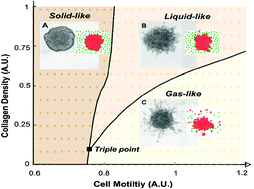On the origins of order
Abstract
A cardinal feature common to embryonic development and tissue reorganization, as well as to wound healing and cancer cell invasion, is collective cellular migration. During collective migratory events the phenomena of cell jamming and unjamming are increasingly recognized, and underlying mechanical, genomic, transcriptional, and signaling events are increasingly coming to light. In this brief perspective I propose a synthesis that brings together in a new way two key concepts. On the one hand, it has been suggested that the unjammed phase of the cellular collective evolved under a selective pressure favoring fluid-like migratory dynamics as would be required so as to accommodate episodes of tissue evolution, development, plasticity, and repair. Being dynamic, such an unjammed migratory phase is expected to be energetically expensive compared with the jammed non-migratory phase, which is presumed to have evolved under a selective pressure favoring a solid-like homeostatic regime that, by comparison, is energetically economical and mechanically stable. On the other hand, well before the discovery of cell jamming and unjamming Kauffman proposed the general biological principle that living systems exist in a solid regime near the edge of chaos, and that natural selection achieves and sustains such a poised state. Here I propose that, in certain systems at least, this poised solid-like state as predicted in the abstract by Kauffman is realized in the particular by the jammed regime just at the brink of unjamming.

- This article is part of the themed collection: Soft matter aspects of cancer


 Please wait while we load your content...
Please wait while we load your content...